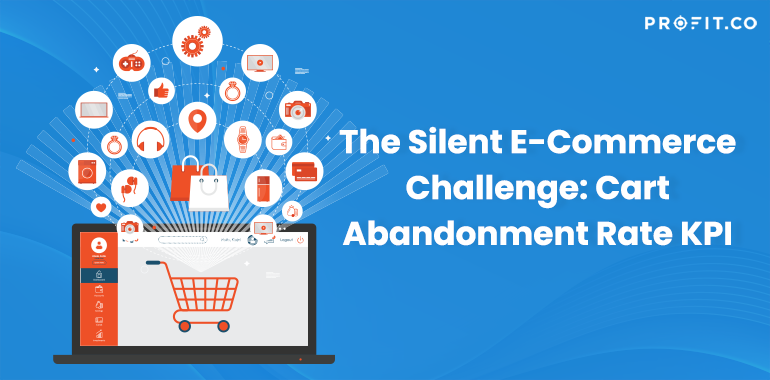This seemingly innocuous KPI represents far more than mere abandoned purchases. It’s a whisper of doubt, a click of hesitation, a silent testament to the fragile connection between intention and action within the e-commerce realm. For retailers, it translates to lost revenue, diminished conversion rates, and a constant quest to understand the elusive shopper who wanders away with a cart full of dreams.
Cart Abandonment: What it is and Why it Matters
Cart abandonment KPI (Key Performance Indicator) is the metric that tracks the percentage of online shopping carts that are filled but never make it through to the transaction completion. It’s a crucial statistic in e-commerce that quantifies the instances where potential customers initiate the checkout process but disengage before finalizing the purchase.
A high cart abandonment rate is often a red flag, indicating various underlying issues in the shopping process, from user experience design flaws to pricing and payment method issues. Addressing these problems can significantly boost conversion rates and overall sales, making the cart abandonment rate a vital health indicator for e-commerce businesses.
“If you build a great experience, customers tell each other about that. Word of mouth is very powerful.”
Understanding the Psychology Behind Cart Abandonment
The psychology of cart abandonment often revolves around the complex interplay of buyer motivation, decision fatigue, and trust concerns. Let’s look deeper into these psychological elements:
- Instant Gratification vs. Delayed Fulfillment: In the fast-paced digital world, consumers are accustomed to immediate satisfaction. When the shopping experience is sluggish or convoluted, it conflicts with this need for instant gratification, leading to cart abandonment.
- Analysis Paralysis and Decision Fatigue: With a plethora of choices available online, customers may feel overwhelmed. This overabundance of options can lead to decision fatigue, where the customer abandons the purchase process altogether rather than make a choice they may later regret.
- Price Sensitivity and Financial Considerations: Economic psychology plays a significant role. When faced with unexpected costs, such as shipping fees or taxes, shoppers may reconsider their purchase, especially if they perceive the total cost as exceeding the value of the item.
- Trust and Security Concerns: Online shoppers are becoming increasingly security conscious. A checkout process that seems insecure or asks for too much personal information can trigger trust issues, prompting the customer to abandon their cart.
- The Role of Emotions in Impulse Purchases: Emotional triggers can influence impulse buying. However, if the buying process is too long or complex, it allows time for the initial emotional impulse to wane, leading to second thoughts and abandoned carts.
- Social Influences and External Opinions: Shoppers are often influenced by external opinions and reviews. They may add items to their cart only to abandon them after seeking advice or reading reviews that sway their decision.
- User Experience and Website Navigation: A seamless and intuitive user interface is crucial. Any friction in navigation or difficulty in finding information can disrupt the shopping experience and lead to cart abandonment.
Understanding these psychological aspects is about creating a customer-centric shopping experience that aligns with the natural decision-making processes of consumers.
Common Reasons for Cart Abandonment
Below the seemingly calm surface of online shopping are undercurrents of reasons leading to cart abandonment.
Unexpected Shipping Charges
- Customers often abandon carts after being surprised by high shipping costs at checkout.
- Discovery of added taxes or fees during the final stages of the purchase can deter customers.
- When the total cost isn’t clear upfront, it creates mistrust and dissatisfaction.
The Dilemma of Complicated Checkout Processes
- A checkout process with too many steps or repetitive information requests can frustrate users.
- Forcing customers to create an account before purchasing can be a significant deterrent.
- Inadequate mobile-friendly design can complicate the checkout process, leading to abandonment.
Website Security on Buyer Decisions
- The lack of visible security badges or SSL certificates can raise concerns about data safety.
- An outdated or unprofessional website appearance can make customers question the site’s legitimacy.
- Customers who don’t see familiar and secure payment options may hesitate to complete the purchase.
By addressing these technical and user experience issues, online retailers can create a more seamless and trustworthy shopping environment by improving the website’s technical aspects and ensuring a transparent, user-friendly, and secure shopping journey for customers.
Learn more about achieving continuous learning for your organization
How Cart Abandonment Impacts Your E-Commerce KPIs?
Cart abandonment creates ripples across various KPIs, echoing through sales, revenue, and customer loyalty metrics. Each abandoned cart is a missed opportunity, a dent in the potential revenue stream, and a crack in the mirror of brand perception.
Tracking and Measuring Cart Abandonment Rates
Tracking and measuring cart abandonment rates is critical to understanding and improving e-commerce performance. The formula to calculate the cart abandonment rate is relatively straightforward:
Cart Abandonment Rate Formula
By regularly calculating and analyzing the cart abandonment rate, e-commerce businesses can gain valuable insights into customer behavior and identify areas for improvement in the shopping experience.

Strategies to Reduce Cart Abandonment
- Pre-Engaging with Cart Abandoners
- Crafting Irresistible Cart Recovery Emails
- Personalized Retargeting
- Building a Long-Term Relationship with Your Customers
OKR Example for Reducing Cart Abandonment in E-commerce
OKRs (Objectives and Key Results) are a performance management framework that helps organizations set clear and measurable goals, align teams, and track progress. In this case, the OKR framework focuses on reducing cart abandonment and increasing revenue in the e-commerce sector. By breaking down the objective into measurable KRs and actionable initiatives, the company can effectively measure and improve its performance in reducing cart abandonment and achieving better business results.
Objective: Improve Cart Abandonment Rate and Boost Revenue
Key Result 1: Reduce Cart Abandonment Rate from 70% to 50%
Initiatives under KR 1:
- Streamline the checkout process to make it more user-friendly and reduce friction points.
- Introduce a free shipping threshold to incentivize larger purchases.
- Use exit-intent pop-ups to offer discounts or incentives to customers about to abandon their carts.
Key Result 2: Increase Conversion Rate for Abandoned Carts from 10% to 25%
Initiatives under KR 2:
- Enhance cart recovery emails with personalized product recommendations and limited-time offers.
- Implement remarketing ads targeting users who abandoned their carts, displaying the items they left behind.
- Conduct A/B tests for various payment options to identify which ones lead to higher conversion rates for abandoned carts.
Key Result 3: Improve Customer Retention from 10% to 20%
Initiatives under KR 3:
- Expand the loyalty program with exclusive discounts, early access to sales, and a points-based rewards system.
- Establish a feedback loop to gather customer insights and use the data to enhance the shopping experience.
- Increase engagement on social media by regularly posting content, running social media-exclusive promotions, and responding to customer inquiries promptly.
In this example, the objective is to reduce cart abandonment and boost revenue in an e-commerce business. This is a strategic goal that directly impacts the overall success of the business. The Key Results (KRs) are measurable outcomes that will indicate progress toward achieving the Objective. Each KR has specific Initiatives, which are actionable steps or projects aimed at achieving the KR.
Understanding the significance of OKRs (Objectives and Key Results) in addressing e-commerce KPIs like cart abandonment is crucial for future-focused businesses. E-commerce, being a rapidly evolving and dominant sector, necessitates tailored OKRs to drive success and growth. We have developed specific e-commerce OKR examples to cater to this need. These examples not only help in strategically reducing cart abandonment rates but also enhance customer engagement and retention. Implementing these OKRs will ensure a more data-driven and customer-centric approach, leading to increased sales and a stronger online presence.
The Future of Cart Abandonment: Predictions and Trends
We foresee evolving trends and innovations in tackling cart abandonment. Predictive analytics, AI-driven personalization, and seamless omnichannel experiences may become the new norm in reducing abandonment rates.
- Metaverse E-Commerce: The Metaverse, a collective virtual shared space, is set to revolutionize online shopping. In this immersive environment, customers could experience products more tangibly, leading to more informed purchase decisions and potentially reducing cart abandonment.
- Virtual Reality Showrooms: VR technology can create virtual showrooms where customers can ‘try before they buy,’ reducing the uncertainty that often leads to cart abandonment. This can be particularly impactful in industries like fashion and furniture, where experiencing the product is crucial.
- Interactive and Immersive Shopping: Integrating VR in e-commerce platforms will allow customers to interact with products in a 3D space, providing a more engaging and realistic shopping experience. This interactivity can lead to higher engagement and a deeper connection with the product, decreasing the likelihood of cart abandonment.
- Personalized Virtual Shopping Assistants: AI-driven VR can offer personalized shopping assistants that understand customer preferences and guide them through the shopping experience, making product recommendations and helping with decision-making.
- Seamless Transition Between Virtual and Physical Shopping: As the lines between online and offline shopping blur, customers can start their shopping journey in a virtual environment and complete it in a physical store, or vice versa. This seamless transition could help reduce the disconnect that sometimes leads to online cart abandonment.
In conclusion, integrating the Metaverse and VR into e-commerce could provide innovative solutions to the age-old cart abandonment problem by enhancing customer engagement, offering immersive experiences, and bridging the gap between physical and online shopping realms.
Conclusion
Rather than viewing cart abandonment as a daunting obstacle, it’s an opportunity to refine and evolve. Embracing these challenges as stepping stones can lead to e-commerce success, turning potential losses into triumphant customer satisfaction and loyalty gains

